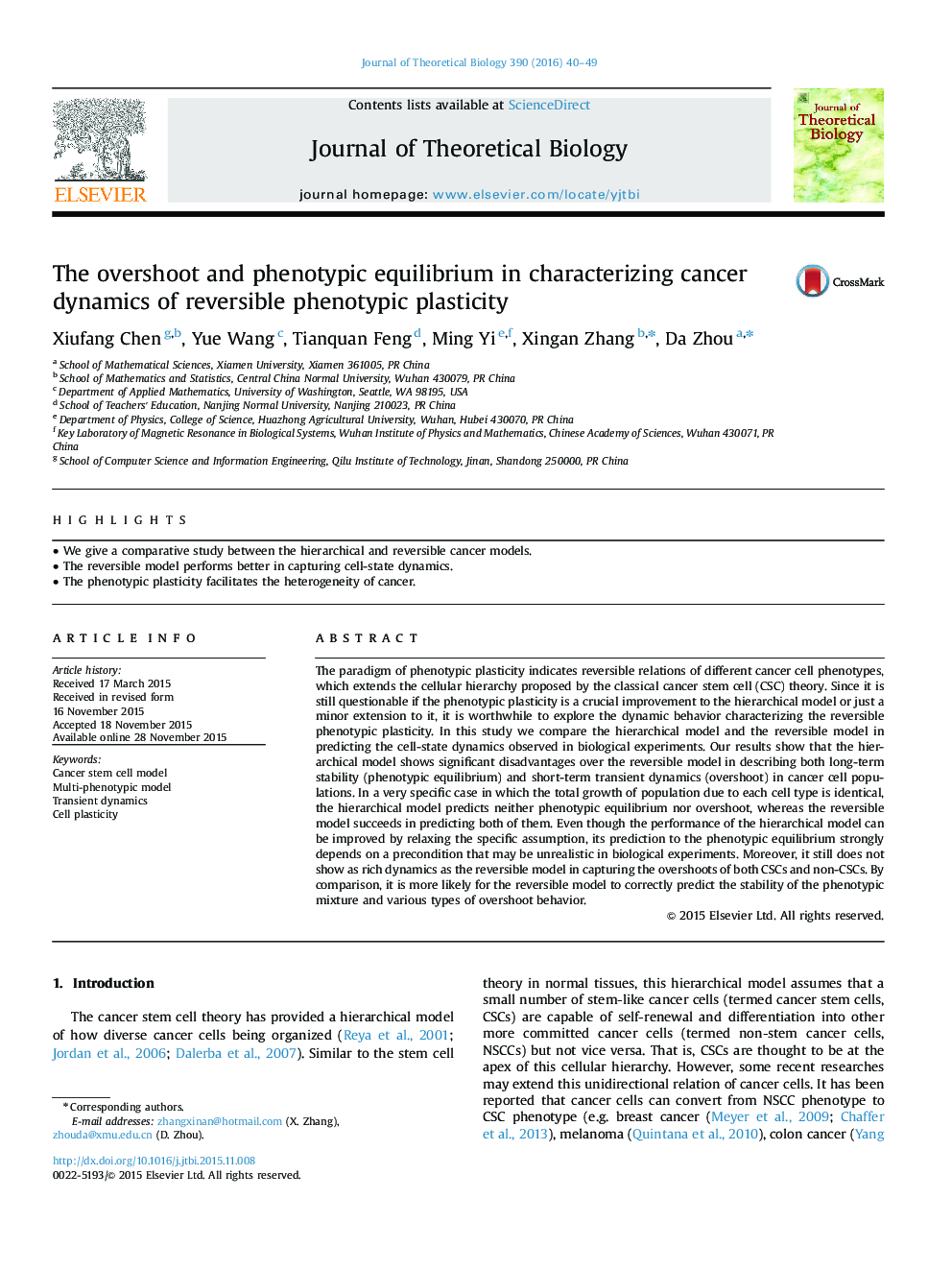| Article ID | Journal | Published Year | Pages | File Type |
|---|---|---|---|---|
| 6369320 | Journal of Theoretical Biology | 2016 | 10 Pages |
â¢We give a comparative study between the hierarchical and reversible cancer models.â¢The reversible model performs better in capturing cell-state dynamics.â¢The phenotypic plasticity facilitates the heterogeneity of cancer.
The paradigm of phenotypic plasticity indicates reversible relations of different cancer cell phenotypes, which extends the cellular hierarchy proposed by the classical cancer stem cell (CSC) theory. Since it is still questionable if the phenotypic plasticity is a crucial improvement to the hierarchical model or just a minor extension to it, it is worthwhile to explore the dynamic behavior characterizing the reversible phenotypic plasticity. In this study we compare the hierarchical model and the reversible model in predicting the cell-state dynamics observed in biological experiments. Our results show that the hierarchical model shows significant disadvantages over the reversible model in describing both long-term stability (phenotypic equilibrium) and short-term transient dynamics (overshoot) in cancer cell populations. In a very specific case in which the total growth of population due to each cell type is identical, the hierarchical model predicts neither phenotypic equilibrium nor overshoot, whereas the reversible model succeeds in predicting both of them. Even though the performance of the hierarchical model can be improved by relaxing the specific assumption, its prediction to the phenotypic equilibrium strongly depends on a precondition that may be unrealistic in biological experiments. Moreover, it still does not show as rich dynamics as the reversible model in capturing the overshoots of both CSCs and non-CSCs. By comparison, it is more likely for the reversible model to correctly predict the stability of the phenotypic mixture and various types of overshoot behavior.
